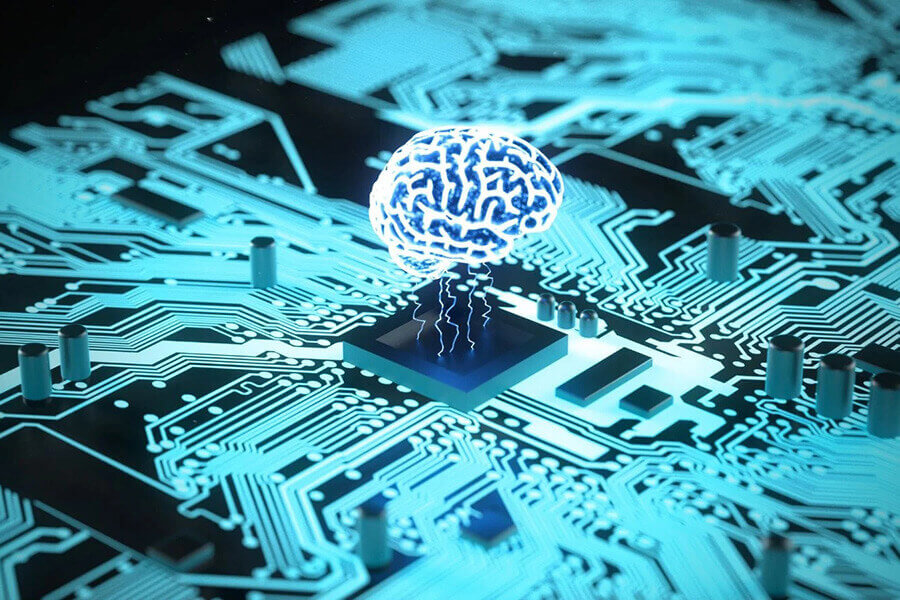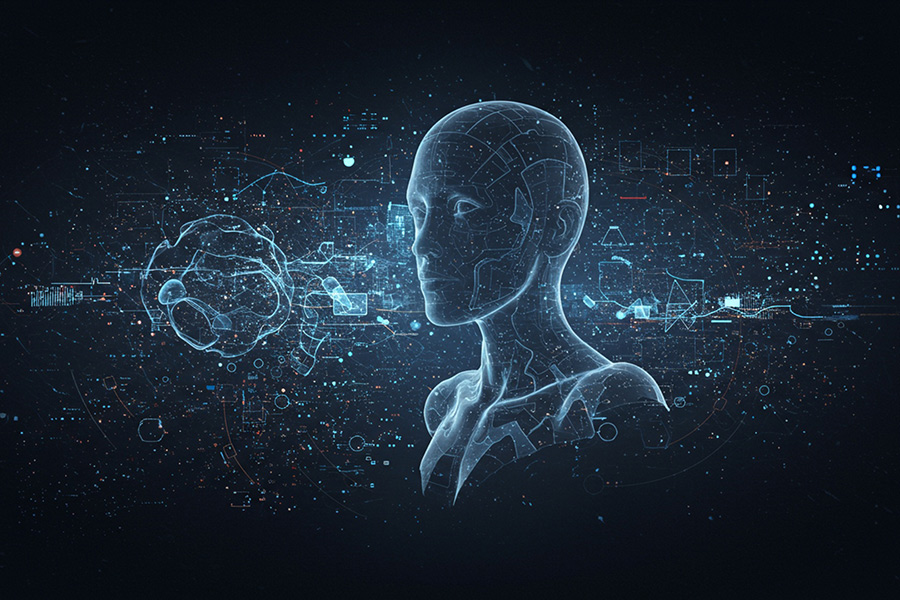How Ambient Computing Is Changing the Way We Interact With Devices and Data
Ambient computing represents a fundamental shift in how humans interact with technology, moving away from traditional screens and buttons toward seamless integration with everyday environments. This paradigm transforms computing from something people actively engage with into an intelligent layer that anticipates needs and responds without explicit commands. The technology operates through sensors, artificial intelligence, and connected devices that work together to create contextually aware experiences.
The concept eliminates the friction between human intention and digital response by embedding computational power directly into physical spaces and objects. Voice assistants, gesture recognition, and predictive automation replace traditional input methods, creating interfaces that feel natural and intuitive. Users benefit from technology that adapts to their patterns and preferences without requiring technical knowledge or manual configuration.
Understanding how ambient computing functions reveals both its transformative potential and the practical challenges that shape its development. The technology promises to make digital interactions more human-centered while raising important questions about privacy, security, and the balance between automation and user control. These considerations will determine how successfully invisible interfaces integrate into daily life.
Understanding Ambient Computing and the Invisible Interface
Ambient computing represents a fundamental shift where technology operates seamlessly in the background, responding to human needs through intelligent systems embedded in everyday environments. The invisible interface eliminates traditional screens and buttons, relying instead on natural interactions like voice commands, gestures, and predictive automation.
Defining Ambient Computing
Ambient computing, also known as ubiquitous computing, enables technology to operate in the background while intuitively responding to user demands without requiring direct intervention. This paradigm shift moves beyond traditional computing models that depend on explicit user commands.
The technology embeds intelligence into ordinary objects and environments. Smart devices become contextually aware of their surroundings and user preferences. They anticipate needs before users express them explicitly.
Ambient systems work invisibly in the background, delivering information or actions when needed. Users interact with these systems through natural behaviors rather than learned interfaces. The computing layer becomes nearly imperceptible while remaining highly functional.
Key Technologies Enabling Ambient Computing
Several core technologies form the foundation of ambient computing systems. Artificial intelligence and machine learning algorithms process vast amounts of environmental data to make intelligent decisions.
The system blends AI, IoT, and real-time data into a unified experience that feels almost invisible. Edge computing processes data locally, reducing latency and improving response times for real-time interactions.
Internet of Things (IoT) devices create interconnected networks of intelligent sensors and actuators, enabling seamless communication and control. These devices continuously collect environmental data, user behavior patterns, and contextual information.
Natural language processing enables voice-based interactions with ambient systems. Smart sensors detect motion, proximity, and environmental changes to trigger appropriate responses without manual input.
The Concept of Invisible Interfaces
Invisible interfaces refer to systems and technologies that run seamlessly in the background without requiring user interaction. These interfaces eliminate traditional visual elements, such as screens, buttons, and menus.
The interface becomes invisible or minimal, often relying on voice, gesture, or predictive automation. Users communicate with technology through natural behaviors they already perform daily.
Voice commands replace touch-based inputs for many everyday tasks. Gesture recognition allows users to control systems through hand movements and body language. Motion detection triggers automated responses based on user presence and movement patterns.
Google has made substantial strides in hidden interfaces for ambient computing through research into embedded display technologies. These interfaces can be integrated underneath materials while maintaining aesthetic appeal.
Evolution of Human-Computer Interaction
Traditional human-computer interaction required users to learn specific commands, interfaces, and interaction patterns. Users had to adapt their behavior to match technological limitations and design constraints.
Modern ambient interfaces reverse this relationship by adapting to human behavior patterns. Technology learns from user preferences, routines, and environmental contexts to provide personalized experiences.
The evolution has seen a shift from traditional interfaces to more intuitive and unobtrusive designs. Ambient computing breaks conventional patterns by embedding intelligence into everyday objects and spaces.
The progression moves from explicit commands to implicit interactions. Users no longer need to operate technology systems to achieve desired outcomes consciously. Ambient interfaces anticipate needs and execute tasks proactively based on learned patterns and contextual awareness.
Applications, Challenges, and the Future of Ambient Computing
Ambient computing transforms daily interactions through smart home integration, voice-activated interfaces, and seamless automation while raising critical questions about data privacy and accessibility for diverse users.
Smart Homes and Everyday Environments
The most visible implementation of ambient computing in everyday experiences are Smart home devices. Smart thermostats automatically adjust temperature based on occupancy patterns and preferences. Smart speakers respond to voice commands without manual activation. While Smart displays integrate with lighting systems, security cameras, and appliances to create responsive environments. These devices learn from human behavior patterns to anticipate needs.
Common Smart Home Applications:
- Climate Control: Automatic temperature adjustment based on presence and schedule
- Lighting Systems: Adaptive brightness and color temperature throughout the day
- Security Integration: Motion detection, door locks, and camera systems
- Entertainment: Multi-room audio, streaming controls, and content recommendations
The technology operates through sensor networks that detect movement, sound, and environmental changes. Smart home automation reduces the need for direct device interaction while maintaining user control through voice commands and smartphone apps.
Voice Assistants and Multimodal Interfaces
Voice assistants like Google Assistant and Siri exemplify ambient computing’s invisible interface approach. Users interact through natural speech patterns rather than traditional touchscreen navigation.
These systems process voice commands to control smart home devices, answer questions, and execute complex tasks. Voice recognition technology has improved significantly, handling multiple accents and conversational contexts.
Voice Assistant Capabilities:
- Device Control: Managing thermostats, lights, and entertainment systems
- Information Retrieval: Weather updates, news briefings, and search queries
- Task Management: Setting reminders, scheduling appointments, and creating lists
- Communication: Making calls, sending messages, and video conferencing
Multimodal interfaces combine voice, touch, and visual elements for more intuitive interactions. Smart displays show visual feedback while responding to spoken requests. This integration creates more natural human-computer relationships.
Privacy, Data Collection, and Trust
Privacy concerns and challenges related to seamless integration present significant barriers to the adoption of ambient computing. Smart home devices continuously collect data about user behaviors, preferences, and daily routines.
Voice assistants record conversations and analyze speech patterns for improved accuracy. This data collection raises questions about storage, sharing, and potential misuse by companies or third parties.
Key Privacy Challenges:
- Always-On Listening: Voice assistants monitor environments for activation words
- Behavioral Tracking: Smart devices log usage patterns and preferences
- Data Sharing: Information exchange between connected devices and services
- Security Vulnerabilities: Potential hacking of networked home systems
Users must balance convenience with privacy protection. Many smart home devices offer privacy controls, but complex settings often confuse non-technical users. Transparent data practices and user-friendly privacy controls remain essential for building trust.
Accessibility and Inclusivity
Ambient computing offers significant benefits for users with disabilities through voice-controlled interfaces and automated systems. Voice assistants enable hands-free control of lighting, temperature, and entertainment for users with mobility limitations.
Smart home automation can assist individuals with visual impairments through audio feedback and voice-guided navigation. These systems reduce reliance on physical interfaces that may be difficult to operate.
Accessibility Benefits:
- Voice Control: Hands-free operation for users with physical disabilities
- Audio Feedback: Spoken confirmations and status updates
- Automated Assistance: Routine task management without manual intervention
- Customizable Interfaces: Adjustable settings for different needs and abilities
However, current voice recognition systems sometimes struggle with speech patterns affected by specific disabilities. Language barriers and accent recognition also limit accessibility for diverse populations.
Inclusivity requires designing ambient systems that accommodate varying technical skills, languages, and physical capabilities. Future development must prioritize universal design principles to ensure broad accessibility.
Conclusion
As ambient computing continues to evolve, it holds the potential to redefine how we experience technology in our daily lives completely. By blending intelligence seamlessly into our surroundings, it shifts the focus from learning how to use technology to simply benefiting from its presence.
Yet, the true success of ambient computing will depend on building trust, ensuring privacy, and maintaining user control while delivering these invisible experiences. If developers and organizations strike this balance, ambient computing could usher in an era where technology feels less like a tool and more like a natural extension of human interaction with the world.








